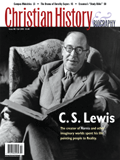Though it shouldn’t surprise anyone that a 77-year-old, overweight man could suddenly fall seriously ill or die, the timing of Ariel Sharon’s stroke is very momentous. I had thought of writing a short primer for those in the US who haven’t kept up, but I just received Daniel Pipes’ latest editorial in my inbox. I quote from the first half which gives the significance of the timing. In the second half, Pipes gives his predictions.
Labour argued for greater flexibility and accommodation with the Arabs, Likud called for a tougher stance. Every one of Israel’s 11 prime ministers came from the two of them, not a single one came from the plethora of others. The two parties together suffered a long-term decline in popularity but they jointly remained the pivots and kingmakers of Israel electoral life.
Or so they did until six weeks ago. On Nov. 21, Sharon left Likud and formed his own party, called Kadima. He took this radical step in part because his views vis-Ã -vis the Palestinians had evolved so far from Likud’s nationalist policies, as shown by his withdrawal of Israeli forces and civilians from Gaza during mid-2005, that he no longer fit there. Also, he had attained such personal popularity that he attained the stature to found a party in his own image.
His move was exquisitely timed and enormously successful. Instantly, the polls showed Kadima effectively replacing Labour and Likud. The latest survey, conducted by “Dialogue” on Monday and published yesterday, showed Kadima winning 42 seats of the 120 seats in the Knesset, Israel’s parliament. Labour followed with 19 seats and Likud trailing behind with a dismal 14.
Kadima’s stunning success turned Israeli politics upside-down. The historic warhorses had been so sidelined, one could speculate about Sharon forming a government without even bothering to ally with one or other of them.
Even more astonishing was Sharon’s personal authority in Kadima; never had Israel witnessed the emergence of such a strongman. (And rarely do other mature democracies; Pim Fortuyn in the Netherlands comes to mind as another exception.) Sharon quickly lured to Kadima prominent Labour, Likud and other politicians who shared little in common other than a willingness to follow his lead.
It was a daredevil, high-flying, net-less, bravura, acrobatic feat, one that would last only so long as Sharon retained his magic touch. Or his health.
A couple of years ago I read Sharon’s autobiography. It’s an interesting read, but it gives no hints that he would become the peace-making middle-of-the-road guy that he appears to have become.



